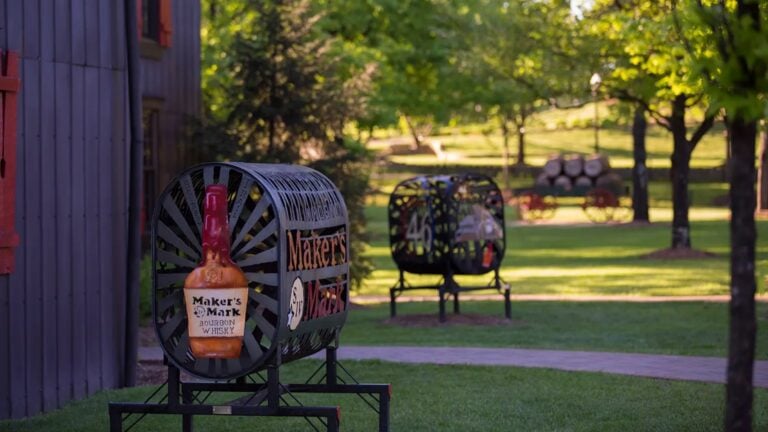Certain things in this lifetime will paint a target on your back. In the unforgiving world of thievery – both common and higher end – this includes a nice timepiece. Granted, the methods of separating a nice timepiece from their rightful owner’s wrist aren’t always so… sophisticated. But where it does become more complex is what comes after. The real magic, as it were, actually lies in who you know and what you know – i.e. the ensuing process of fencing “hot” watches through a network of proxies, eventually selling it off internationally, and making away with the ill-gotten gains before anyone gets wise. And often times, where standard law-enforcement are too slow on the draw, that’s when Christopher Marinello steps in: founder and CEO of Art Recovery International.
Original interview undertaken by Cam Wolf; further research added for this adaptation.
The “fixer” with a law degree
The Christopher Marinello we know today can be described in many ways. Which is only fitting for someone who has curated such a long and storied career in this seldom publicised industry. In easy-to-digest pop cultural terms, think: Indiana Jones meets Harvey Specter meets Neal Caffrey meets… whoever the bloke Nick Cave was singing about in “Red Right Hand”. Hyperbolic? Perhaps a touch. But fitting the more you learn about the living legend behind Art Recovery International.

In the present day, Marinello is one of the foremost experts in recovering stolen, looted, and missing art/high-end items; but surprisingly enough, his story finds its first pages in the face of failure. More specifically, it all began with the stark realisation he wasn’t cut out to be an artist or even an art student for that matter.
“A very long time ago I was an artist and not a very good one. My art teacher encouraged me to become a lawyer as an alternative profession… So I became a lawyer.”
– Marinello, Observer interview – 2017.
After a few years, Marinello made a name for himself as a litigator “uniquely proficient in negotiating complex title disputes“. Between collectors, dealers, museums, insurance companies – you name it.
In 2006, Marinello began what would be a seven-year tenure with Art Loss Register. A private organisation specialising in exactly what it sounds like, which would also serve as the blueprint for his own rival entity – Art Recovery International. This was the moment in history when he crafted an almost-mythical reputation through his exploits as General Counsel slash Executive Director. Of course, Marinello would part ways with Art Loss Register to form Art Recovery International in 2013 after a longstanding disagreement with the former’s “methods” which, how to put this delicately… pushed the boundaries of legality in the pursuit of a recovery fee. I won’t bore you with the details, it’s a tale as old as time.
A game of sophistication
Now at this point in time, the elephant in the room needs to be addressed. We may or may not have buried the lead. As the headline and opening paragraph have indicated, the chosen angle for this entire story is how Marinello tracks stolen watches that meet a certain value threshold. What we’ve failed to explicitly outline is how exactly Marinello developed his reputation. Or rather, we’ve failed to explicitly outline the recovered items that made his name famous.

Priceless artworks plundered by Nazis during the Holocaust. Artworks by Matisse. Artworks by Rodin. As of right now, Marinello is even in pursuit of the missing Aston Martin DB5 used in Goldfinger – which incidentally, we’ve also visited in a previous write-up. At the risk of contradicting the whole “priceless” term, but to put a tangible figure on his deeds, it is estimated Marinello has recovered approximately US$500 million worth of artwork operating as a white-collar fixer. This is the calibre of professional we’re dealing with. So why does a man famed for recovering missing items of high culture bother with nice cars and fancy watches?
“Nobody’s going to tell me that a stolen Ferrari isn’t a work of art.”
Naturally, his views on other high-end items like a million dollar Patek Philippe are about the same. In fact, while a man such as Marinello traditionally occupies their time with prolific art cases, the recent demand for extra-curricular help in the realm of stolen watches has only been on the increase. Just last year in Paris, for instance, a Japanese businessman had his AU$1.2 million Richard Mille RM 51-02 Tourbillion “Diamond Twister” snatched right off his wrist while enjoying a cigarette. Coincidentally, Marinello is currently tracking a Richard Mille RM-030 “Argentina” which was similarly snatched from the wrist of its rightful owner in London. Though this one is worth considerably less at the low to mid six-figure range. Still – it’s valuable enough to rouse attention from all the right people. Present company included.
“I mean, just look at these watches. They’re big and they’re bright. They stand out.”
More importantly, they’re easy to pawn off. A least a lot easier than, say, hundreds of millions in stolen cultural art.

Cat & Mouse
Anyone that has ever had to file a police report will attest to just how painful it is. All the details and verification before any meaningful action is undertaken. There’s so much red-tape and bureaucracy that by the time all the paperwork is in order, the culprit – or at least an efficient culprit – will have distanced themselves far enough to make it an even larger feat to trace anything back. For those moments where something – such as a timepiece that cannot be ignored – Marinello and Art Recovery International possess a unique flexibility to side-step the usual processes, as well as a certain finesse. A certain finesse that’s equal parts street smarts and white-collar connections.
The majority of the former involves a network of private detectives and what Marinello calls “dirty work”. Sourcing information from the ground level to help him set up traps. Sourcing information is one term for it. From an outside perspective through the eyes of a layman, it can seem like a shotgun blast of calls, texts, and emails to dealers, boutiques, and auctions. As much as hundreds over the course of a single case, hence why it can take two whole years before Marinello and Art Recovery International secures a target on behalf of their clients. Despite the sheer volume, all it takes is the right prompt to get a person of interest to step forward and unravel the situation.
Contrary to belief, convincing someone to surrender their stolen watch – regardless of whether the possessor is aware it had indeed been stolen – is the easiest part in this entire process. Individuals who can afford such watches, albeit with the added advantage of a suspicious discount, want to invest neither time nor effort for the sake of retention. They’d much prefer to put the entire mess behind them. Individuals who can afford such watches, after all, can simply purchase another (hopefully with the right certifications going forward).

Even when everything goes right, however, the instigating culprit is seldom caught or brought to justice. They’re simply the first in a long line of dominoes, each one keeping the convoluted chain of events in motion. There are so many steps involved between the initial lifting of a timepiece to its eventual owner that the eventual owner often isn’t even aware the timepiece is stolen. And when they unwittingly send it away for routine servicing, the serial number is what alerts the attack dogs in suits.
The waters also become a little murkier when you consider the fact that no one wants to admit they purchased something through less-than-legitimate means. Nor do the victims care to admit how they misplaced it on the odd occasion – whatever that compromising reason may be, e.g. drunken night out, extra-marital affairs, a rowdy bucks party, etc.
“We often try to trace back from dealer to dealer: ‘Where did you buy it from? And where did that person buy it from? And where did that person buy it from? Eventually, if everybody was honest with us, we would locate the piece.”
Read the full original write-up here.
















